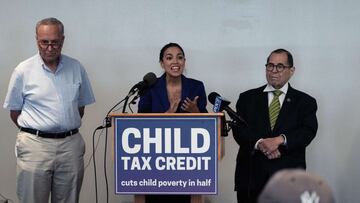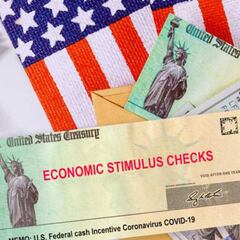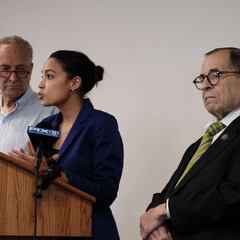$3000/$3600 Child tax credit: are children between 6 and 17-years-old included?
Children between the ages of 0 and seventeen will begin receiving the first payment of the Child Tax Credit today. How has the age eligibility changed?


On 15 July, parents and guardians around the country began to receive the first payment of the child tax credit.
The IRS determines eligibility and the quantity that will be sent based on a taxpayer’s 2020 return. The tax authority is hoping that those not required to submit a tax return will sign up so that the agency can distribute the advanced credits to them. Those looking to register to receive payments can do so through the IRS' Child Tax Credit Non-filer Sign-up Tool.
Families with children under seventeen are eligible to receive the credit. However, the credit’s value does change depending on the age of the child.
For children under six, the total value of the credit is $3,600, with a monthly payment of $300 through December. Families with children between the ages of six and seventeen will receive a credit worth $3,000, with monthly payments of $250.
First day of the new Child Tax Credit https://t.co/OW0OD9xcrS pic.twitter.com/Vi9vbNuEIg
— Jeff Stein (@JStein_WaPo) July 15, 2021
Changes made under the American Rescue Plan: Age, Distribution, Quantity
The American Rescue Plan made three major changes to the Child Tax Credit.
The first relates to the age of children eligible for the credit. Before the passage of the trillion-dollar stimulus plan, only those in the care of children under sixteen could claim the credit. Now, one more year of eligibility has been added to support families with older children. However, parents should be mindful that they may need to return some of the payments if their child turns eighteen this year.
The second altered the way the credit is distributed, allowing for the sending of advanced payments of the credit. For that reason, by the end of this year, half the value of the credit will be sent directly to households. The remainder will be sent along with the family’s tax refund next year. Before the change, families could claim the credit, and the funds were sent with one’s tax refund.
While some families are opting to delay payments to receive the credit as a bulk sum, this new structure helps low-income families who struggle to make ends meet.
The third is the quantity distributed. Before, the credit was worth $2,000 for all children, of which only $1,400 was refundable. To receive the credit, a family had to have an earned income of at least $2,500; this, combined with various other factors, led to the exclusion of around 27 million children, around half of which are from minority backgrounds.
Related stories
The Center of Budget and Policy Priorities has highlighted how low-income families, even those eligible, were penalized. Many families could not refund the full value of the credit “because their parents earn too little, even as middle- and higher-income families get the full amount.”
To give you a sense of how transformative the expanded Child Tax Credit is: It’s going to spur the largest-ever one-year decrease in child poverty in American history.
— President Biden (@POTUS) July 15, 2021
These new changes have been applauded by child rights advocates who believe they could make a sizeable impact on poverty rates, specifically child poverty.
- IRS
- Crisis económica coronavirus Covid-19
- Ciencia
- Coronavirus Covid-19
- Crisis económica
- Impuestos
- Pandemia
- Coronavirus
- Recesión económica
- Hacienda pública
- Tributos
- Coyuntura económica
- Virología
- Epidemia
- Enfermedades infecciosas
- Finanzas públicas
- Enfermedades
- Microbiología
- Medicina
- Economía
- Finanzas
- Biología
- Salud
- Ciencias naturales

